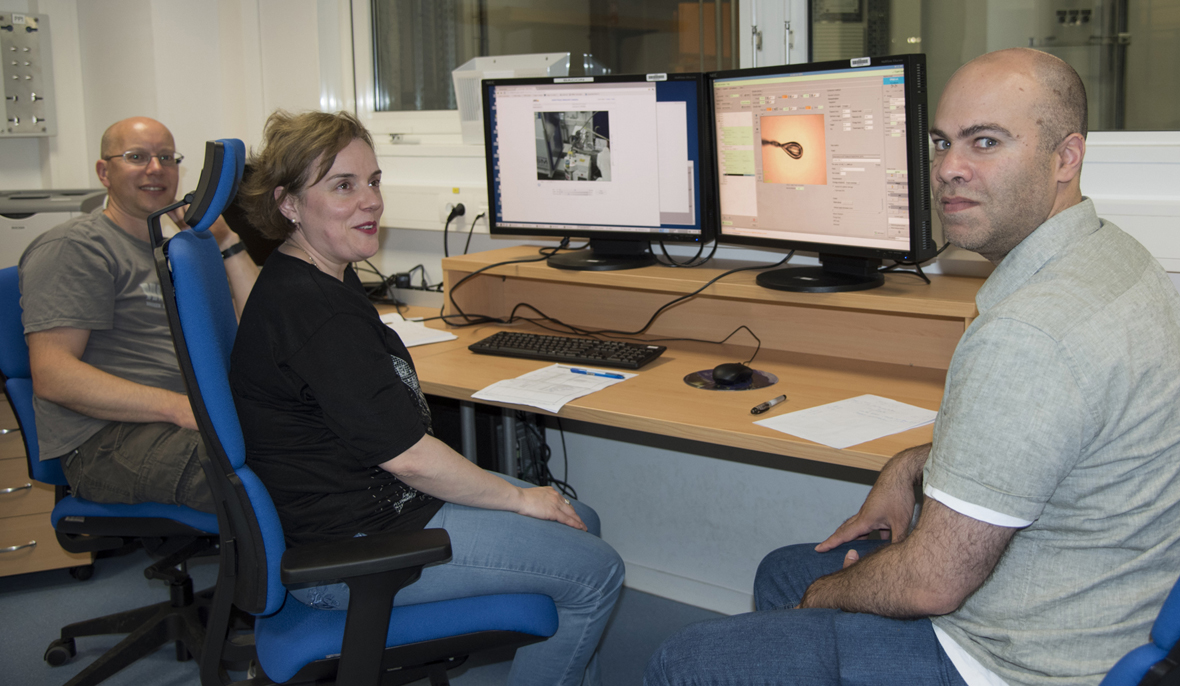- Home
- News
- General News
- First Users on ESRF...
First Users on ESRF ID30B
26-06-2015
Beamline ID30B/MAD welcomed its first users this week with a group of scientists from Leiden University in the Netherlands.
The team is using ID30B/MAD to study crystals of the protein CSB or Cockayne Syndrome Protein B which is a key element in repairing UV damaged DNA: mutations in CSB lead to Cockayne Syndrome. They hope to collect enough data to solve the structure of this protein and open the path to finding a cure for this rare disease.
“Yesterday evening we were collecting data from very small plate-like crystals: the level of automation and the technological developments* pioneered at the ESRF was crucial in collecting high quality data from such a fragile sample”, says Navraj Pannu, who is heading the team.
With just three shifts at the ESRF, Navraj says he is confident that the data obtained will enable the team to solve the protein structure once it is analysed back in their home lab.

From left to right: Andrew McCarthy (ID30B beamline scientist), Claudia Temperini and Navraj Pannu from Leiden University, study a CSB crystal. Not photographed: Serkan Ceyhan (Leiden University), Christoph Mueller Dieckmann (ID30B beamline scientist).
Cockayne Syndrome is a rare neurodegenerative disorder that occurs in about 2 per million newborns in the USA and Europe. It is characterized by short stature, growth failure and an appearance of premature aging. Affected individuals have an extreme sensitivity to sunlight and other signs and symptoms include hearing loss, eye abnormalities, severe tooth decay and changes in the brain.
Further reading
*Technological developments at the ESRF
More research from the ESRF about repairing UV-damaged DNA
Top image: The first team of users on ID30B. They are studying crystals of the protein CSB, a key element in repairing UV damaged DNA. Credit: ESRF/Argoud



